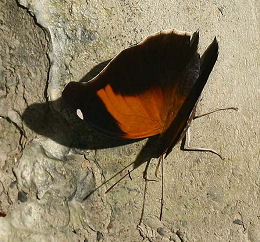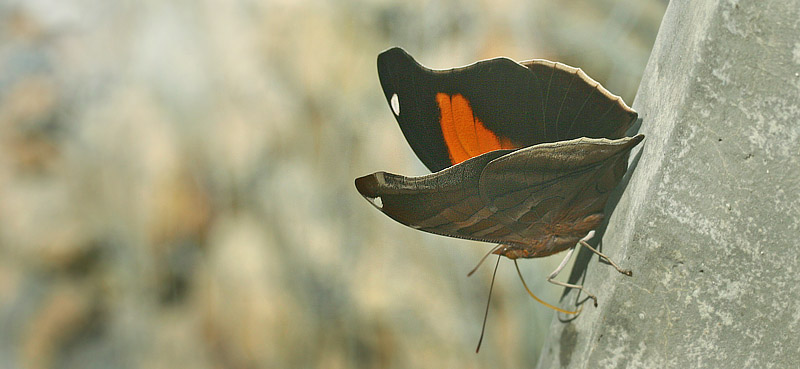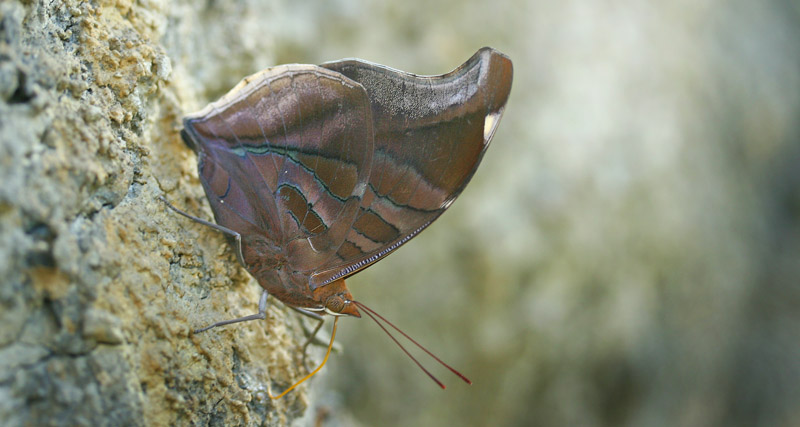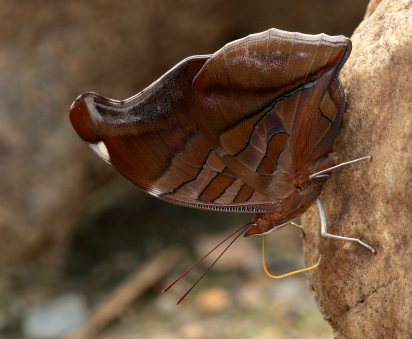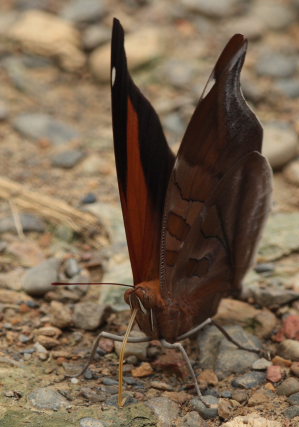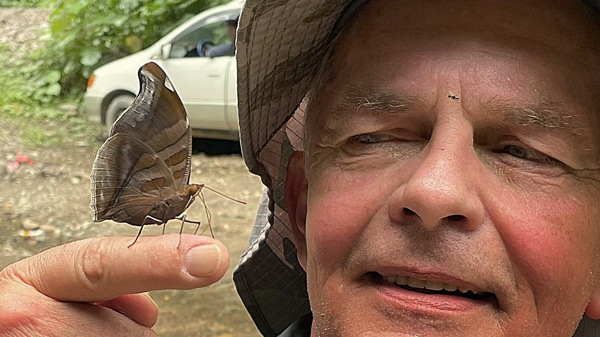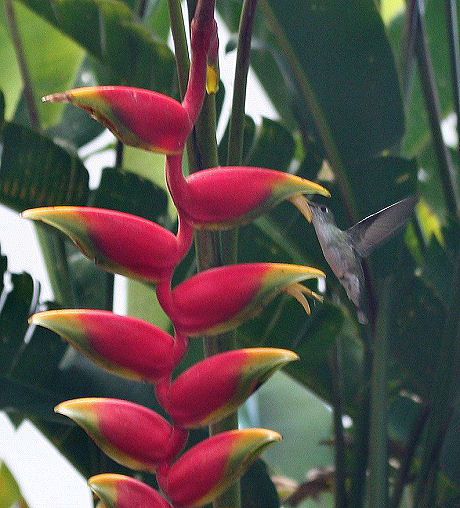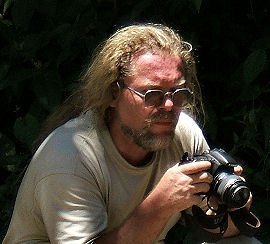Orion Cecropian
Historis odius
January 20, 2006 -
December 7, 2024
____________________________________
Orion Cecropian. Historis
odius ssp. dious (Lamas, 1995).
Tocana, Yungas,
Bolivia d. 20 january 2006. Photographer: Lars Andersen
Orion Cecropian. Historis
odius ssp. dious (Lamas, 1995).
Caranavi,
Yungas, Bolivia january 20 and february 7, 2006. Photographer; Lars Andersen
Orion Cecropian. Historis
odius ssp. dious (Lamas, 1995).
Caranavi, Yungas, Bolivia d. 13 February 2009. Photographer: Lars Andersen
| Orion
Cecropian, Historis
odius
(Fabricius, 1775). Description: A large butterfly
showing a large orange patch on the forewing if
seen from above. Introduction:
This large and magnificent butterfly, marked on
the upper surface with a broad swathe of bright
orange on a black ground colour. The vernacular
name Stinky Leafwing, and the species name
odius are probably references to the odorous
rotting fruits to which the butterfly is
attracted. Habitats: This
species occurs in a wide variety of forested
habitats, from the humid deciduous woodlands of
Nicaragua and Guanacaste, to the rainforests of
the Amazon basin and the premontane cloudforests
of the Andes. It occurs at altitudes between sea
level and about 1600m. Historis (Hübner, 1819). Butterfliesofamerica.com Historis
acheronta (Fabricius, 1775). Tailed
Cecropian. Similar species:
There are only 2 species in the genus Historis, Other name: Orion Cecropian or Stinky Leafwing. Espanol: La mariposa lumbrera. Learn Butterflies GBIF: Global Biodiversity
Information Facility. GBIF: Global Biodiversity
Information Facility. íNaturalist.org |
Orion
Cecropian, Historis odius ssp. dious (Lamas, 1995). With Peter Møllmann's butterfly on his hand.
From Rio Broncini near Caranavi valley, Yungas, Bolivia d. 5 December 2024. Photographer: Kirsten
Matthiesen.
Tailed Cecropian, Historis acheronta (Fabricius, 1775). Caranavi, Yungas, Bolivia 31 January 2008. Photographer: Lars Andersen
____________________________________
dont use this pictures without permission from:
photographer © Lars Andersen
Mariposas de Bolivia
Enero 2006
Mariposas de Bolivia
Enero 2006
por Peter Møllmann y Lars Andersen
Mariposas de Bolivia
Enero 2005
por Peter Møllmann, Annelie B. Nielsen y Lars Andersen
Home tilbage til forsiden

